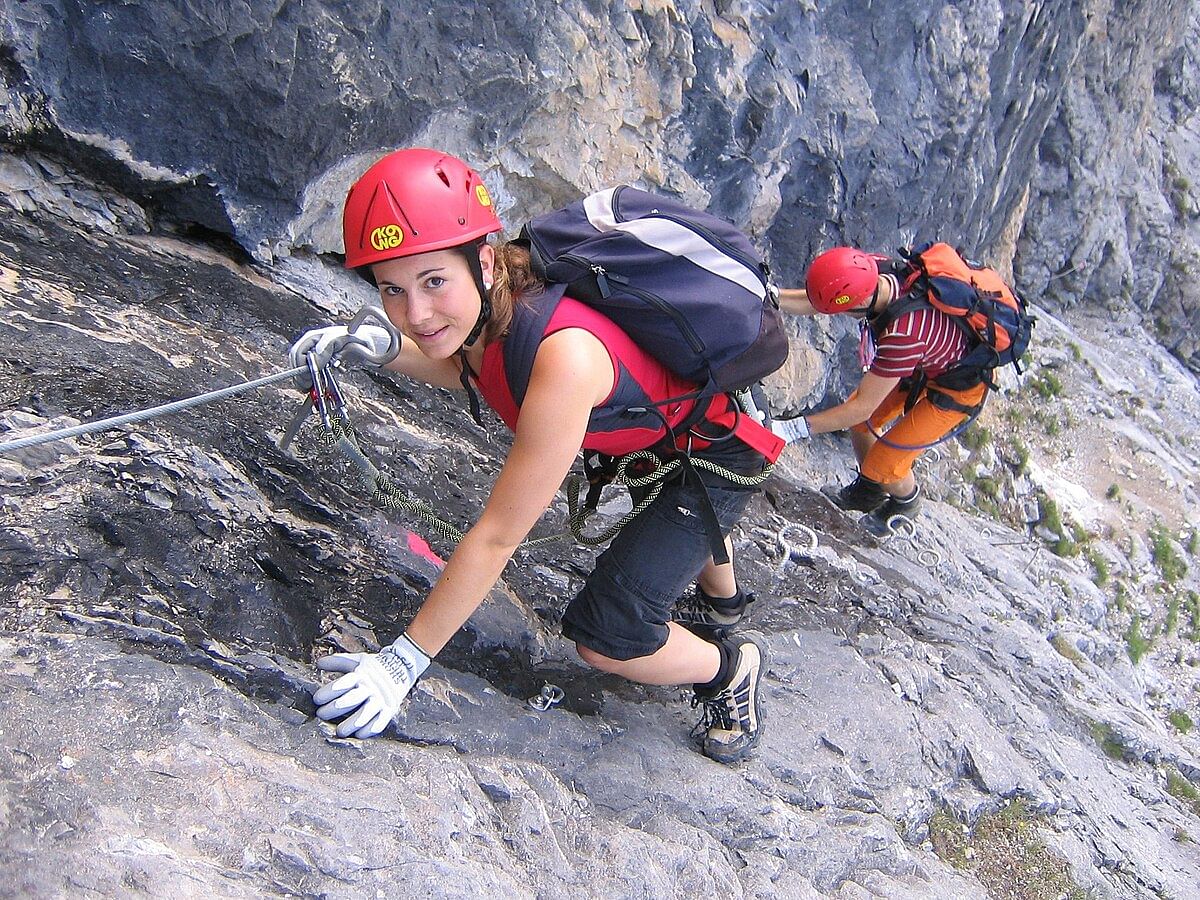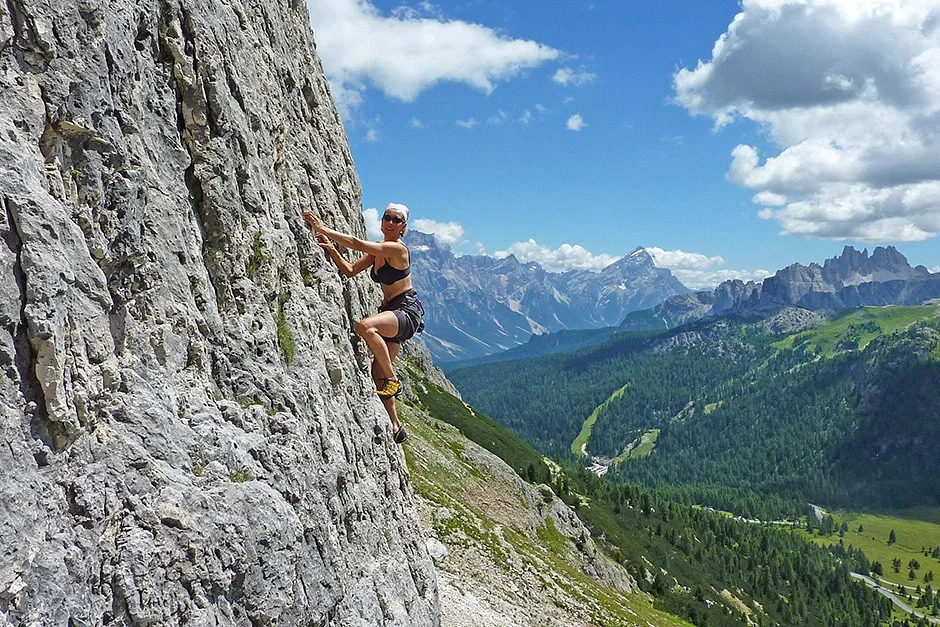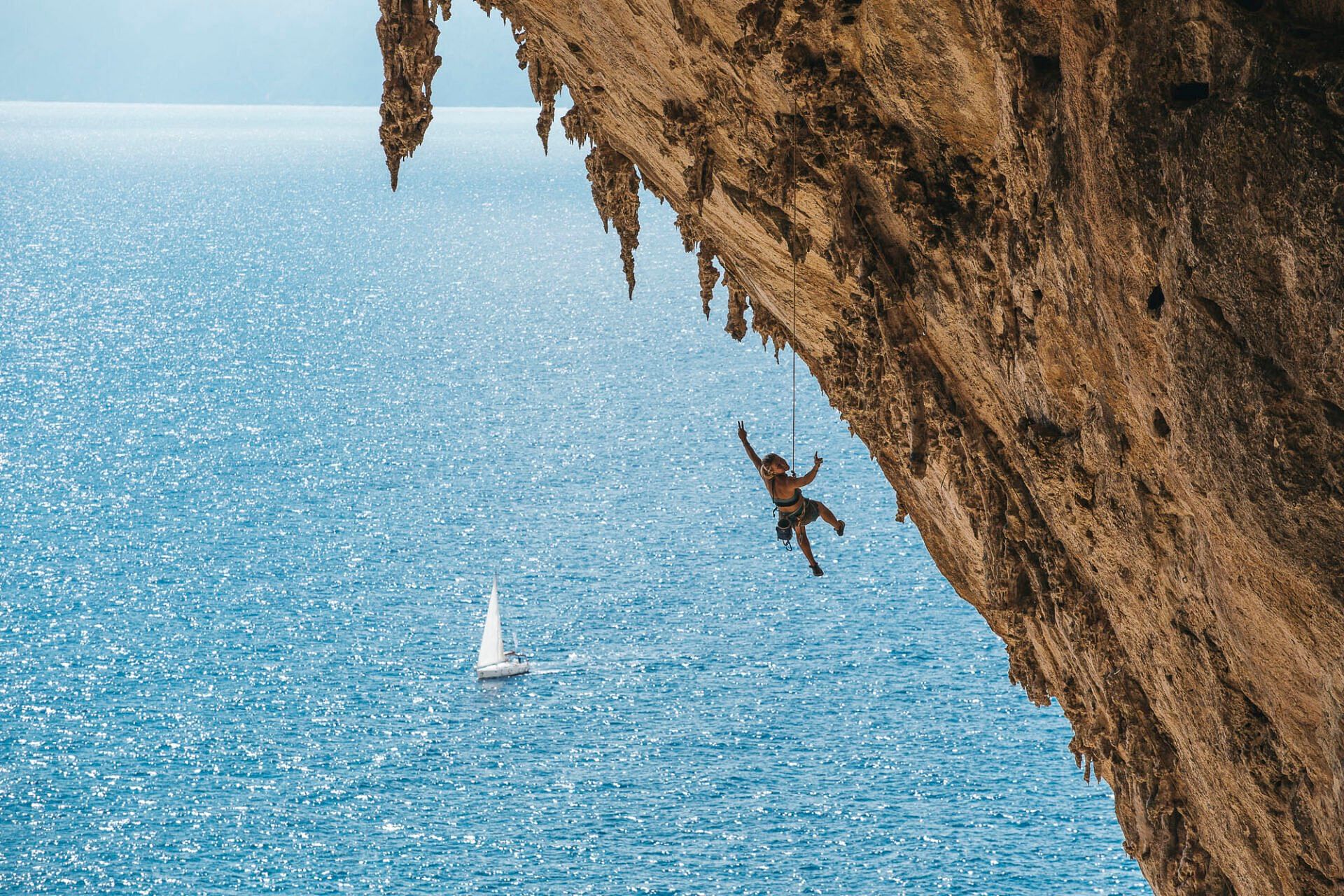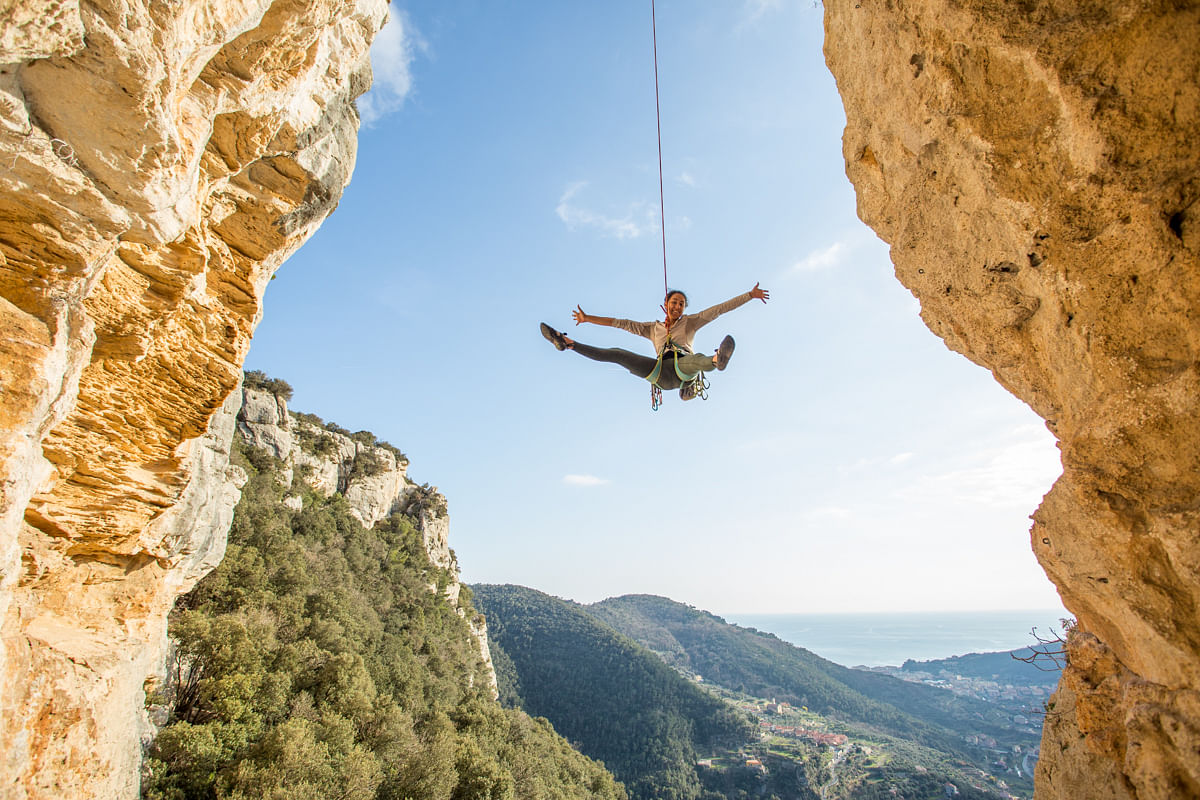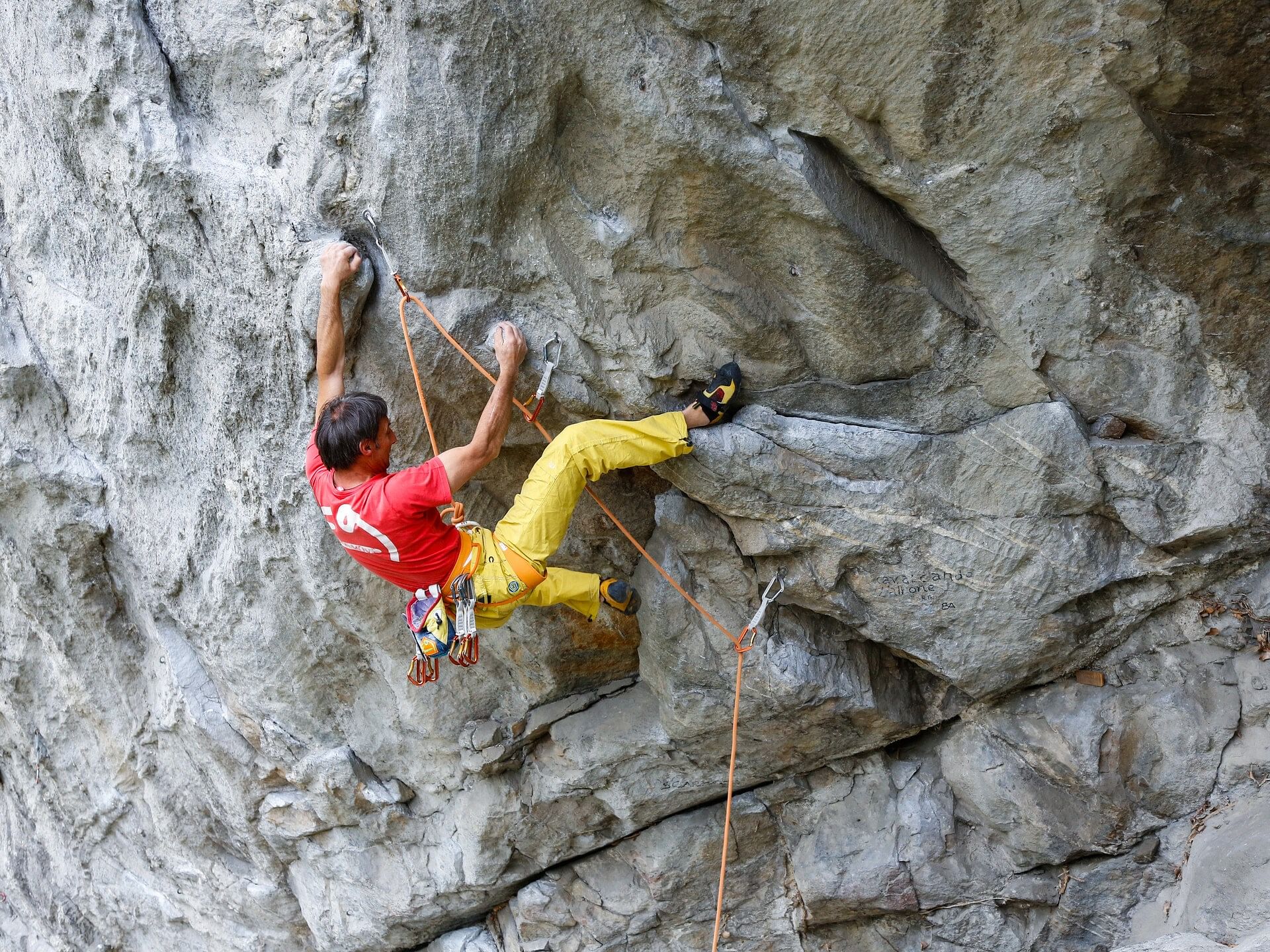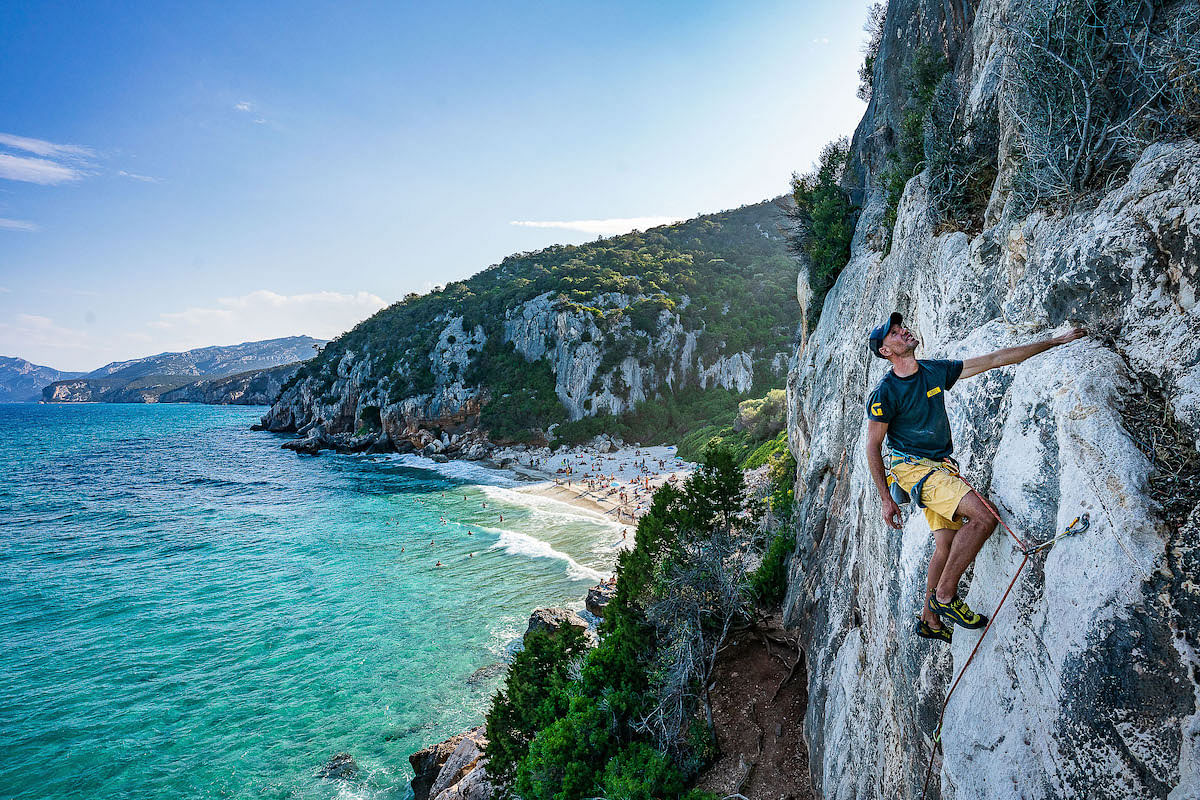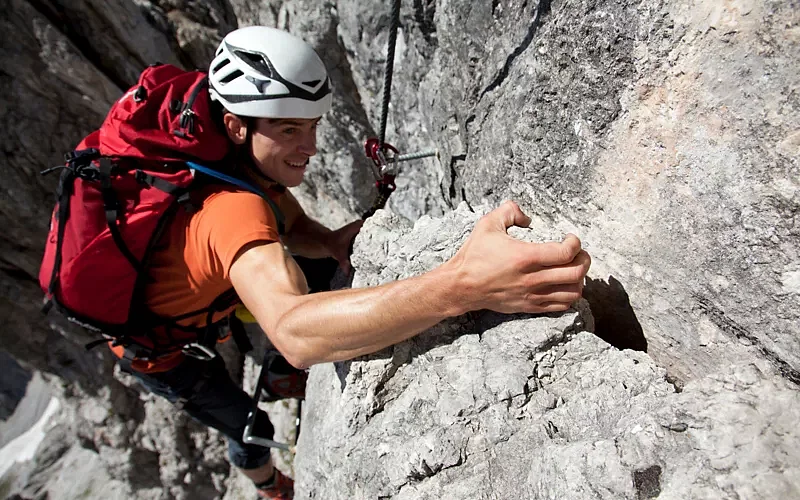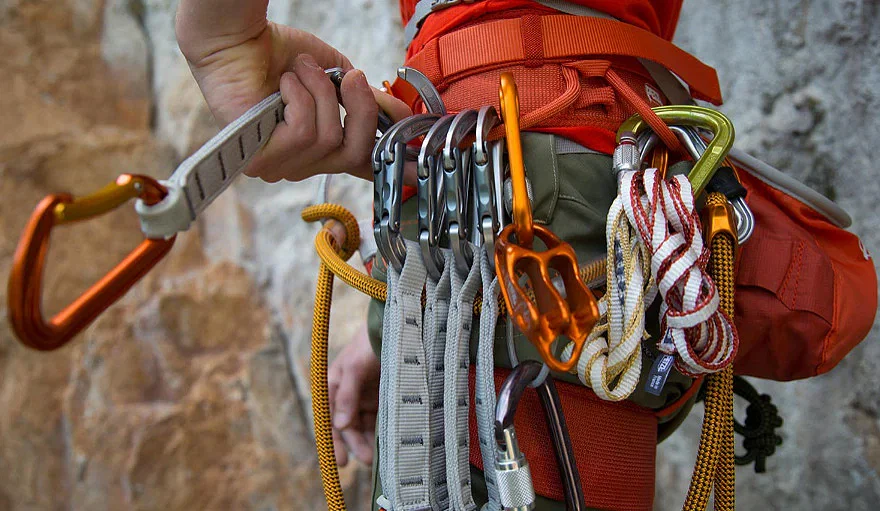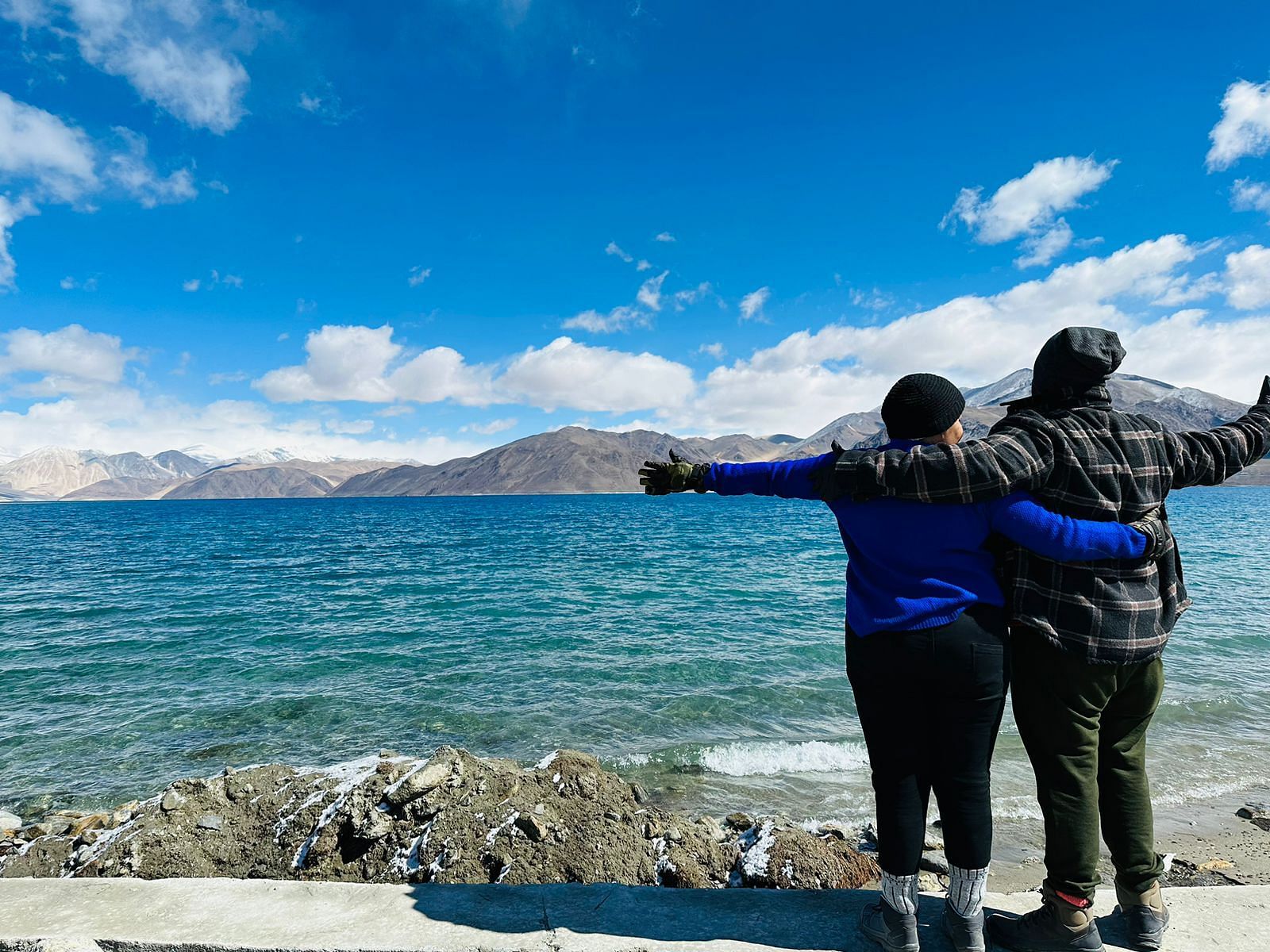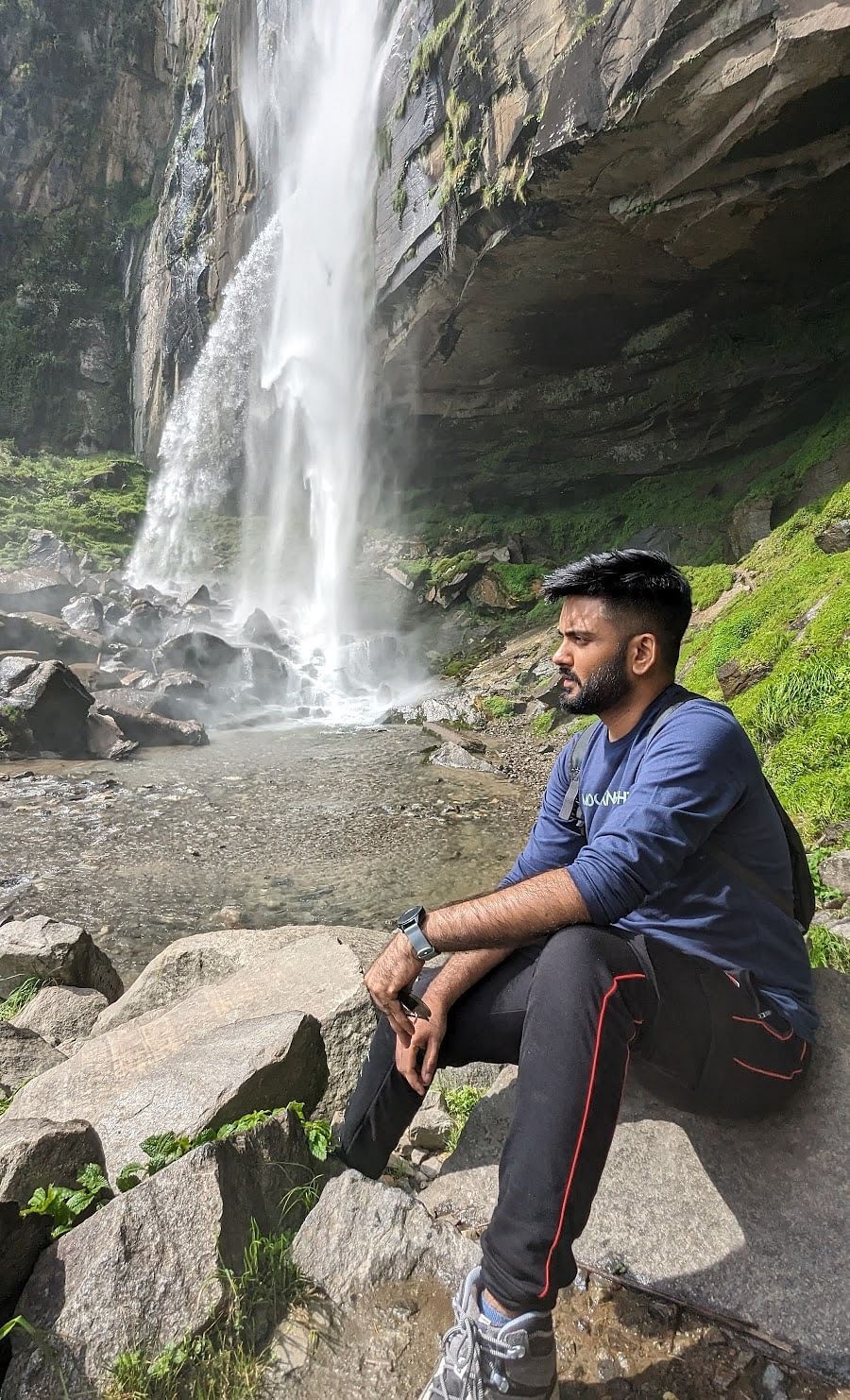Italy is an iconic place for rock climbers, which combines rich culture with beautiful landscapes. The geography of the country makes it an ideal place for rock climbers, making rock climbing in Italy one of the best things on your Europe Trip from India.
Italy offers a number of climbing styles and different levels of climbing across the diverse landscape, making the activity one of the best things to do in Europe.
Top Spots For Rock Climbing in Italy
The Dolomites are among the best places for rock climbing in Italy, forming stunning limestone and offering multiple pitch routes, reaching some 800m, making it the best spot for the activity.
- Types: Traditional and alpine climbing.
- Rock Type: Dolomite Limestone
- What to expect: Big alpine routes, classic climbs including the Tre Cime di Lavaredo and Marmolada.
Arco is one of the popular sport climbing destinations, offering some really cool limestone cliffs and a wide range of routes for all levels of rock climbing.
- Types: Sports climbing, multi-pitch.
- Rock Type: Limestone
- What to expect: It hosts famous Rock Master competitions, offering a variety of routes and grades.
Welcome to the island that boasts diverse options for climbing, which include limestone, granite, sport and trad routes with coastal and inland locations, making it among the best places for rock climbing in Italy.
- Types: Sport climbing, trad climbing, multi-pitch, etc.
- Rock Type: Limestone
- What to expect: World-class sport routes at Vala Gonone, seaside limestone cliffs, the Supramonte region, Cala Goloritze, etc.
Popular for its granite boulders and multi-pitch routes, Val di Mello is a great spot for traditional climbing, which is why it is known as the best places for rock climbing in Italy.
- Types: Trad climbing, bouldering, Alpine multi-pitch
- Rock Type: Granite
- What to expect: It is known for trad lines and slabs with minimal bolting, and is home to classic routes like Il Risveglio di Kundalini.
Suggested Read: Colosseum in Rome: World’s Largest Amphitheatre
Offering a mix of single and multi-pitch sport routes, Finale Ligure is a popular spot for rock climbing on the Italian Riviera, making it perfect for the activity.
- Types: Sport climbing, multi-pitch, etc.
- Rock Type: Limestone
- What to expect: Oldest sport climbing areas, with thousands of routes, technical slabs, tufas, areas like Monte Cucco, Rocca di Corno, and Bric Scimarco.
Sarca Valley, located near the Lake Garda is a rock climbing paradise for all the climbers looking for some adrenaline rush.
- Types: Sport Climbing, multi-pitch, trad, etc.
- Rock Type: Limestone and dolomitic limestone
- What to expect: Popular for hosting the Rock Master competition, massive concentration of climbs, from single pitch to 1000m walls.
It features challenging alpine routes on granite towers and spikes, with areas like Courmayeur offering access to Mont Blanc.
- Types: Sport climbing, Alpine climbing, ice climbing in winter, etc.
- Rock Type: Granite and gneiss
- What to expect: Close to Mont Blanc, Matterhorn, and Gran Paradiso, great multi-pitches, sport sectors, alpine ambience, etc.
Suggested Read: Best Places For Hiking in Europe
Best Time For Rock Climbing in Italy
The best time for rock climbing in Italy depends on the areas that you are visiting. Every season has something to offer:
- Spring(April to June): Ideal for most regions like Arco, Dolomites, and Finale Ligure.
- Autumn (September to November): Great all-around, especially in Sardinia, Dolomites, and Arco.
- Summer (July to August): Best for high-altitude areas like the Dolomites and Gran Paradiso.
- Winter (December to March): Good for Sardinia and alpine climbing in the Dolomites.
However, the most ideal seasons among tourists are Spring and Autumn.
Reasons To Choose Italy For Rock Climbing
If you are wondering about reasons to choose Italy for Rock Climbing, then here are some suggestions:
- Diverse Climbing Areas: From the towering Dolomites to the coastal cliffs of Sardinia, Italy offers a variety of climbing landscapes for all levels.
- World-Class Sport Climbing: Areas like Arco (Lake Garda) and Finale Ligure are known for their extensive sport climbing routes, including challenging limestone cliffs.
- Alpine and Trad Climbing: The Dolomites and Gran Paradiso offer stunning alpine and traditional climbing, with long, multi-pitch routes and pretty views.
- Year-Round Climbing: Thanks to Italy's varied climate, you can go rock climbing round the year. Sardinia and coastal regions remain mild in winter, while the Dolomites offer summer and autumn alpine adventures.
- Scenic Beauty: Climbing in Italy means experiencing breathtaking landscapes, from the jagged Dolomites to the Mediterranean coastline, making every climb a visual feast.
- Rich Climbing History: Italy has a deep climbing culture with historic routes, making it a place for climbers who enjoy exploring iconic spots and legendary challenges.
- Vibrant Climbing Community: The climbing scene is lively and welcoming, with great local guides, climbing festivals, and a passionate community of climbers.
- Delicious Food and Culture: After a day of climbing, you can enjoy Italy's renowned food, wine, and culture, making it a perfect mix of adventure and relaxation.
Tips For Rock Climbing In Italy
Before you go rock climbing in Italy, here are a few tips that you need to remember to be safe and make the most of it:
- Pick the Right Time
- Spring and autumn are the best times for climbing.
- Summer is good for high-altitude places like the Dolomites, but can be very hot in the lower areas.
- Winter works well in places like Sardinia.
2. Bring the Right Gear
- Make sure you have the right equipment for the type of climbing you plan to do (sport, trad, or alpine).
3. Know the Route
- Italy has sport climbing (bolted routes), trad climbing (requires gear), and alpine climbing (long, tough climbs). Know what to expect for your chosen area.
4. Ask Locals for Tips
- Local guides can be very helpful, especially in tricky areas like the Dolomites. They know the best routes and current conditions.
5. Follow Local Rules
- Some popular places get busy, so try to start early.
- Always clean up after yourself and respect nature.
6. Check the Weather
- Mountain weather can change fast. Always check the forecast before you go.
- Stay Safe in the Sun and Heat
- Drink plenty of water, especially in summer.
- Wear sunscreen, a hat, and sunglasses.
7. Respect Access Rules
- Some areas have special rules, like times when routes are closed to protect wildlife. Make sure to check before you climb.
8. Find Quiet Spots
- While places like Arco are famous, there are many hidden spots like Monte Cucco or Calabria where you can enjoy climbing without the crowds.




